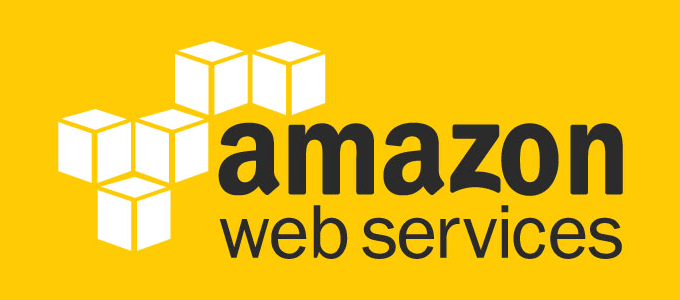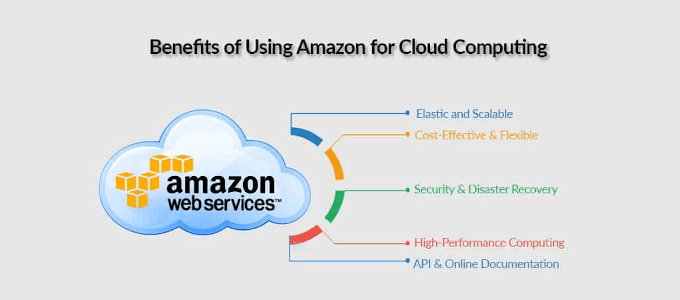Touted as the world’s most comprehensive and broadly adopted cloud platform, Amazon Web Services (AWS) has become a giant component of Amazon’s business portfolio. Just as Amazon.com has shaken up the online retail space, AWS has shaken up the world of computing.
Comprising multiple cloud computing products and services such as servers, storage, and networking, Amazon Web Services has become the frontrunner for cloud computing platforms, overshadowing competitors like Microsoft Azure.

In short, AWS is a cash cow for Amazon. But what is Amazon Web Services exactly? What in the world is cloud computing?
What Is Amazon Web Services?
A subsidiary of Amazon.com, Amazon Web Services (AWS) offers affordable cloud-computing services with the power to make its customer base strong from small scale companies like Pinterest to big enterprises like D-Link.
Cloud computing is the use of remote servers on the internet to store, manage and process data rather than a local server or personal computer. Cloud computing comes in three basic categories beginning with Software as a Service (SaaS) which reduces company expenditure by providing a cloud server with software already included.

Platform as a Service (PaaS) lets developers build apps and collaborate on various projects without the need to purchase or maintain infrastructure.
Last, we have Infrastructure as a Service (IaaS) which is what AWS falls under more so than the others. IaaS provides companies the chance to rent servers, storage, security, etc. from a cloud provider.
Amazon Web Services’ Services
Amazon Web Services provides customers with a wide array of cloud services. Some of the options offered are Amazon Elastic Compute Cloud (EC2), Amazon Simple Storage Service (S3), Amazon Virtual Private Cloud (VPC), Amazon SimpleDB and Amazon WorkSpaces.

- Amazon EC2 provides virtual computing environments offering affordable scalable computing capacity in the AWS cloud. EC2 eliminates the need to invest in hardware, enabling customers to develop and deploy apps at a faster rate.
- Amazon S3 is used in the storage and retrieval of data, at any time, from anywhere in the world on the web. It’s a reliable, scalable, and inexpensive data storage infrastructure that benefits larger businesses.
- Amazon VPC is a virtual data center-like network defined by you which uses the scalable infrastructure of AWS. With Amazon VPC, you can launch your resources kept within the AWS environment into this virtual network without the need to purchase software or infrastructure.
- Amazon SimpleDB is a NoSQL data store for offloading the work of database administration. A developer can store and query different data items via web services request with the reliance that SimpleDB will complete the work.
- Amazon WorkSpaces works as another form of cloud computing, Desktop as a Service (DaaS). With this, you receive a secure desktop solution using either a Windows or Linux operating system. This service can then be scaled to provide virtual desktops to workers all over the world.
The Benefits of AWS

Cost
Companies used to have to physically build a storage space in order to store large amounts of data and maintain it themselves. Choosing to store data on the cloud came at considerable expense on top of lengthy contracts that had the potential to hinder company growth. Purchasing more space than needed could become too expensive, while purchasing too little could prove disastrous.
The same principle applied to computing power. Sustaining business at peak times required that companies buy more power. The problem was during off-peak times when the power was no longer required. The company would still have to pay for power they weren’t even using.
AWS allows companies to only pay for what they use. With no upfront costs on storage and infrastructure, there is no longer a need to estimate usage versus cost. AWS scales cost automatically to the needs of its customers.
Scalability

Start-ups and small businesses receive obvious benefits from the scalability that Amazon Web Services offers. The cost is modified based on the customers’ usage, making AWS a great choice for building a business from the bottom up. That business will receive all the tools necessary to build a start up with the cloud.
Already established businesses will benefit from Amazon’s low-cost migration services allowing a seamless move of infrastructure over to AWS.
AWS continues to provide resources in aid of expansion as a business continues to grow thanks to a flexible usage business model. Customers no longer need to revisit a discussion about whether their current budget for computer usage is necessary. In some circumstances when pertaining to AWS’s scalability, a company can use AWS to “set it and forget it.”
Security and Reliability

AWS has servers located within 76 availability zones, spanning 245 countries and territories. These zones have been divided not only to give users a choice in setting geographical limits on their services, but also to diversify physical locations, providing stronger security and avoiding permanent data loss worldwide.
Every data center across the globe is maintained and continuously monitored. Arguably, Amazon Web Services is much more secure than a company hosting its own website or storage. This is because the localization of data in a single, easily identifiable location could prove vulnerable.
AWS allows access to its physical data centers on an essential basis only. This, on top of keeping these locations hidden from the public, creates a stronger barrier to physical intrusions. Outages and potential server attacks are also safer thanks to Amazon’s experience with cloud services. The round the clock heavy monitoring makes it so that any attack can be quickly identified and dealt with by a single IT specialist.
Choosing Amazon Web Services

Built by a global leader in online retail, Amazon Web Services removes the guess-work and scientific analysis required to identify your infrastructure needs. The flexible pay-per-use model reaps benefits for startups in need of a cheaper starting option. While longtime existing businesses continue to expand with hundreds and thousands of customers leveraging AWS in over 190 countries.
The training and certification of AWS has also become a much sought after and high in-demand validation by professionals and organizations in need of innovative teams for cloud initiatives.
AWS is not without its disadvantages, primarily dealing with EC2’s region to region default resource limits and other general cloud computing issues like server downtime and limited control.
Regardless, choosing Amazon Web Services provides easy-to-use cloud computing with no capacity limits on a cost-effective, reliable and secure platform.